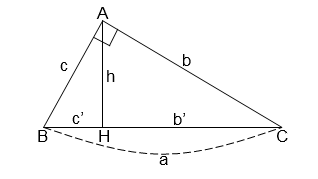Trả lời bởi giáo viên
ĐKXĐ: \(\left\{ \begin{array}{l}x \ge 0\\x \ne 1\\x \ne 9\end{array} \right.\)
Ta có: \(P = \dfrac{{\sqrt x }}{{\sqrt x - 3}} = \dfrac{{\sqrt x - 3 + 3}}{{\sqrt x - 3}} = 1 + \dfrac{3}{{\sqrt x - 3}}.\)
Để \(P\) nhận giá trị là số nguyên dương thì \(\left\{ \begin{array}{l}P \in \mathbb{Z}\\P > 0\end{array} \right. \Leftrightarrow \left\{ \begin{array}{l}\dfrac{3}{{\sqrt x - 3}} \in \mathbb{Z}\\1 + \dfrac{3}{{\sqrt x - 3}} > 0\end{array} \right.\)
\(\begin{array}{l} \Leftrightarrow \left\{ \begin{array}{l}\dfrac{3}{{\sqrt x - 3}} \in Z\\\dfrac{3}{{\sqrt x - 3}} > - 1\end{array} \right. \\\Leftrightarrow \left\{ \begin{array}{l}\dfrac{3}{{\sqrt x - 3}} \in Z\\\dfrac{{3 + \sqrt x - 3}}{{\sqrt x - 3}} > 0\end{array} \right. \\\Leftrightarrow \left\{ \begin{array}{l}\left( {\sqrt x - 3} \right) \in Ư\left( 3 \right)(1)\\\dfrac{{\sqrt x }}{{\sqrt x - 3}} > 0\,(2)\end{array} \right.\\(1) \Leftrightarrow \left( {\sqrt x - 3} \right) \in \left\{ {1;\,\,3} \right\}\\ \Leftrightarrow \left[ \begin{array}{l}\sqrt x - 3 = 1\\\sqrt x - 3 = 3\end{array} \right. \Leftrightarrow \left[ \begin{array}{l}\sqrt x = 4\\\sqrt x = 6\end{array} \right. \\\Leftrightarrow \left[ \begin{array}{l}x = 16\,\,\left( {tm} \right)\\x = 36\,\,\left( {tm} \right)\end{array} \right.\end{array}\)
Nhận thấy với \(x=16;x=36\) vẫn thỏa mãn (2).
Nên \(x = 16\) hoặc \(x = 36\) thì P nguyên dương.
Hướng dẫn giải:
Sử dụng kết quả câu trước \(P = \dfrac{{\sqrt x }}{{\sqrt x - 3}}\) với \(x \ge 0;x \ne 1;x \ne 9\)
Đưa P về dạng \(P = a + \dfrac{m}{{\sqrt x - 3}}\left( {a;m \in \mathbb{Z}} \right)\), khi đó để \(P\) nhận giá trị là số nguyên dương thì \(\left\{ \begin{array}{l}P \in \mathbb{Z}\\P > 0\end{array} \right. \Leftrightarrow \left\{ \begin{array}{l}\dfrac{m}{{\sqrt x - 3}} \in \mathbb{Z}\\a + \dfrac{m}{{\sqrt x - 3}} > 0\end{array} \right.\)



